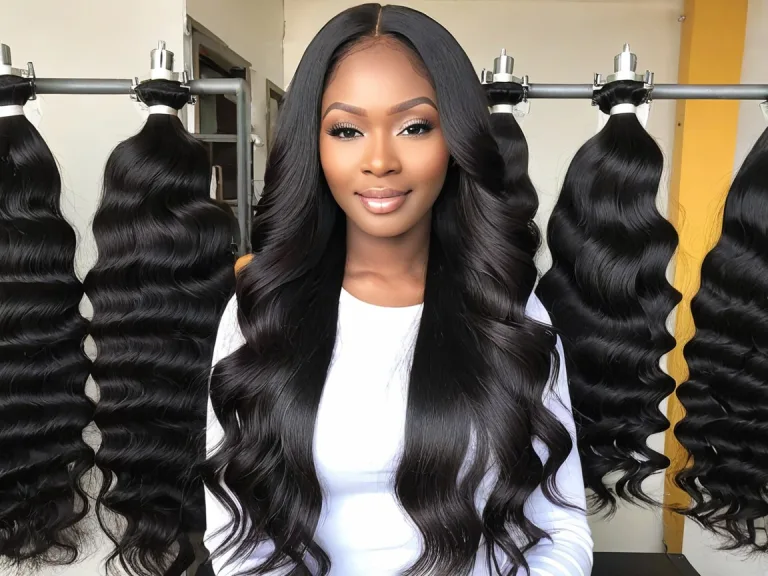Interior French Doors: Styles, Features, and Best Uses in Modern Homes
Interior French doors have experienced a remarkable resurgence in modern home design, transcending their traditional roots to become versatile architectural elements that bridge classic elegance with contemporary functionality. These distinctive double doors, characterized by their glass panel construction and refined aesthetic, offer homeowners a sophisticated solution for dividing spaces while maintaining visual connectivity and natural light flow. As open-concept living continues to dominate residential design, interior French doors provide the perfect compromise—creating flexible boundaries that can open spaces completely or close them off as needed, all while adding undeniable charm and value to any home.
The Enduring Appeal of Interior French Doors
The history of French doors dates back to the Renaissance period in France, where they were originally designed as tall windows that opened onto balconies. Today’s interior French doors honor this heritage while incorporating modern materials, construction techniques, and design innovations that make them more accessible and practical than ever.
What makes these doors particularly relevant in contemporary homes is their ability to solve modern living challenges. As families seek spaces that adapt to different needs throughout the day—a home office that closes off for focused work but opens to join the living area during evenings, or a playroom that can be monitored while maintaining some separation—French doors provide elegant solutions. They preserve the spacious feel of open-concept layouts while offering privacy, noise control, and visual definition when desired.
Popular French Door Styles
Traditional Divided Light French Doors
The quintessential French door style features multiple rectangular glass panes separated by wooden or metal muntins, creating a grid pattern that’s instantly recognizable. This style typically includes 10, 15, or even 20 individual glass sections per door, with the grid providing both structural support and decorative appeal.
Traditional divided light doors work exceptionally well in period homes, colonial-style interiors, and spaces aiming for timeless elegance. The muntin pattern adds architectural interest and visual texture that complements crown molding, wainscoting, and other classical details. These doors pair beautifully with traditional furniture styles and create a sense of established sophistication.
Full-Lite French Doors
For homeowners seeking maximum light transmission and unobstructed views, full-lite French doors feature a single large glass pane in each door with minimal framing. This contemporary interpretation eliminates the traditional grid, creating clean sightlines that make spaces feel larger and more connected.
Full-lite designs align perfectly with modern and transitional interiors where simplicity and openness are priorities. They work particularly well in homes with minimalist aesthetics, contemporary furnishings, and architectural styles that favor clean lines over ornate details. The expansive glass allows natural light to flow freely between spaces, making both rooms feel brighter and more spacious.
Simulated Divided Light (SDL) Doors
Simulated divided light doors offer the best of both worlds—the appearance of traditional muntins without the cleaning challenges of true divided panes. These doors feature a single glass pane with decorative grilles applied to the surfaces or sandwiched between double-pane glass.
SDL doors are significantly easier to clean than true divided light doors since there are no crevices between panes to trap dust and debris. They typically cost less than authentic divided light construction while delivering nearly identical aesthetics from a normal viewing distance. For homeowners who love the traditional French door appearance but value practical maintenance, SDL doors represent an ideal compromise.
Contemporary French Door Variations
Black-Framed French Doors
One of the hottest trends in interior design features French doors with black or dark-framed profiles. This bold aesthetic creates striking contrast against light-colored walls and adds dramatic definition to doorways. The dark frames emphasize the architectural geometry of the doors while lending an industrial or modern farmhouse character to spaces.
Black-framed French doors work exceptionally well in homes with industrial elements like exposed brick, concrete, or metal fixtures. They complement modern farmhouse styles, Scandinavian-inspired interiors, and contemporary spaces seeking bold architectural statements. The dark frames pair beautifully with other black accents like lighting fixtures, cabinet hardware, and window frames.
Frosted and Textured Glass French Doors
Privacy-enhanced French doors incorporate frosted, etched, seeded, or otherwise textured glass that obscures views while still allowing light transmission. These variations maintain the openness that makes French doors appealing while providing visual privacy suitable for bedrooms, bathrooms, or home offices.
Textured glass options include light frosting for subtle obscuring, heavy frosting for complete privacy while maintaining translucency, seeded glass with deliberate bubbles creating vintage character, and rain glass with textured patterns mimicking water streaks. These doors work exceptionally well in master bedroom suites where you want light from adjacent bathrooms without direct sightlines.
Key Features to Consider
Material Construction
Solid wood doors represent the premium choice, offering natural beauty, substantial feel, and the ability to refinish multiple times over their lifespan. Popular wood species include pine for affordability, oak for traditional appearance, mahogany for rich color and stability, and maple for smooth painted finishes. Wood doors require periodic maintenance but provide unmatched character and warmth.
MDF (Medium-Density Fiberboard) doors offer excellent value and performance for painted finishes. MDF is extremely stable, resisting warping and cracking better than solid wood. It provides perfectly smooth surfaces that show no grain, making it ideal when you want flawless painted finishes. Quality painted MDF doors can look virtually identical to painted wood doors at significantly lower costs.
Composite materials blend wood fibers with resins, creating doors that resist moisture and temperature fluctuations. These work particularly well in challenging locations like near bathrooms or in areas where humidity varies.
Glass Configuration and Safety
Glass selection impacts both aesthetics and functionality. Clear glass maximizes light and views, while tempered glass breaks into small granules rather than dangerous shards, providing safety especially important in homes with children. For sound dampening and additional security, laminated glass bonds multiple layers together.
Low-E coatings can reduce heat transfer if doors separate climate-controlled areas. While building codes may not require tempered glass for interior doors, the safety benefit makes it worth considering, particularly in high-traffic areas.
Hardware and Operational Features
Hardware selection affects both functionality and style. Lever handles offer easier operation than knobs, particularly for those with limited hand strength. Privacy locks work well for bedrooms and bathrooms, while passage hardware (no lock) suits general interior applications.
Quality hinges are crucial for proper operation. Ball-bearing hinges operate more smoothly and last longer than standard hinges, particularly on heavy wood doors. Consider astragal types—the vertical strip where door pairs meet—as this affects both seal quality and appearance.
Best Uses for Interior French Doors in Modern Homes
Home Office Separations
As remote work becomes permanent for many professionals, creating dedicated home offices has become essential. Interior French doors excel in this application, allowing you to close off your workspace for focused work and video calls while maintaining visual connection to your home. The glass panels let you see family members without the distraction of open doorways transmitting every household sound.
French doors provide significant sound dampening compared to open doorways, making them ideal for home office applications. They signal to family members when you’re working without completely isolating you. During non-working hours, the doors can open completely, reintegrating the office space with main living areas. For maximum privacy during video calls, consider French doors with frosted or textured glass.
Kitchen and Dining Room Transitions
Traditional closed-off kitchens have given way to open concepts, but many homeowners are rediscovering the benefits of separating cooking and dining areas. French doors between kitchens and dining rooms or living spaces offer flexibility—open during entertaining for flow, closed during meal preparation to contain cooking smells, sounds, and visual clutter.
This application works particularly well in homes where serious cooking happens. Closing doors while preparing elaborate meals keeps messes contained and allows the cook to focus without feeling on display. When entertaining, opening the doors creates generous passage and visual connection between spaces.
Master Bedroom Suites
French doors add elegance to master bedroom suites, whether separating sleeping areas from sitting rooms, closing off luxurious bathrooms, or defining walk-in closet entrances. The refined aesthetic elevates the entire suite while maintaining the open, connected feel that makes luxury suites appealing.
For bathroom applications, frosted glass French doors provide privacy while allowing light from bathroom windows to illuminate bedroom spaces. They also prevent the claustrophobic feeling that solid doors can create in windowless bathrooms, making the entire suite feel more spacious and connected.
Living Room and Family Room Separations
In larger homes with both formal living rooms and casual family rooms, French doors allow these spaces to function independently while maintaining the option to open them for large gatherings. The doors preserve the elegant feeling of formal living rooms while allowing them to connect with everyday living spaces when needed.
This configuration works beautifully during holidays and parties when maximum space is needed—doors open completely creating generous entertaining flow. During daily life, closing the doors preserves the formal space while concentrating family activity in more casual areas.
Laundry Room Concealment
Modern laundry rooms often connect directly to kitchens or main living areas for convenience. French doors allow you to close off laundry operations while maintaining the light and open feel that makes these connections work. Frosted glass options provide privacy while ensuring the laundry area doesn’t feel like a dark closet.
The visual refinement of French doors elevates utilitarian laundry rooms, making their presence in prime living spaces more acceptable while maintaining easy access and functionality.
Styling and Decorating Tips
Paint and Finish Selection
For wood French doors, finish choices dramatically impact overall appearance. Natural stains showcase wood grain and character, working beautifully in traditional, craftsman, and rustic interiors. Painted finishes offer incredible versatility—classic white remains most popular, matching trim throughout most homes and providing timeless elegance. Black or dark navy creates contemporary drama, while soft grays work beautifully in modern and transitional spaces.
Hardware Finishing Touches
Hardware selection offers opportunities for personalization. Finish options include polished or satin brass for traditional elegance, brushed or polished nickel for transitional spaces, oil-rubbed bronze for rustic or Mediterranean styles, and matte black for modern, dramatic looks. Match hardware finishes to other fixtures in the space for cohesive design.
Conclusion
Interior French doors represent far more than simple room dividers—they’re architectural elements that enhance how we experience and use our homes. Their unique ability to create flexible boundaries while maintaining openness makes them invaluable in modern living, where spaces must adapt to changing needs throughout the day.
Whether you’re drawn to traditional divided light patterns that honor French door heritage, contemporary full-lite designs that maximize openness, or bold black-framed styles that make architectural statements, interior French doors offer options for every aesthetic and application. Their versatility extends from formal living spaces to practical home offices, from elegant master suites to hardworking laundry rooms.
By understanding the various styles, features, and applications available, you can select French doors that not only solve practical challenges but also enhance your home’s character and value. These timeless architectural elements prove that functionality and beauty need not be mutually exclusive—interior French doors deliver both in equal measure, creating spaces that live better while looking better.






